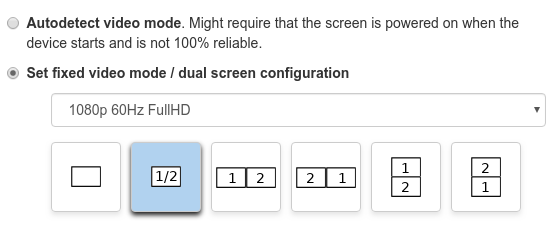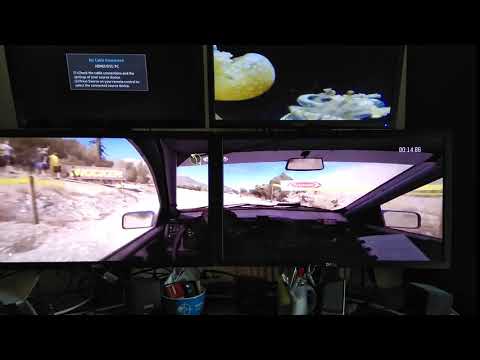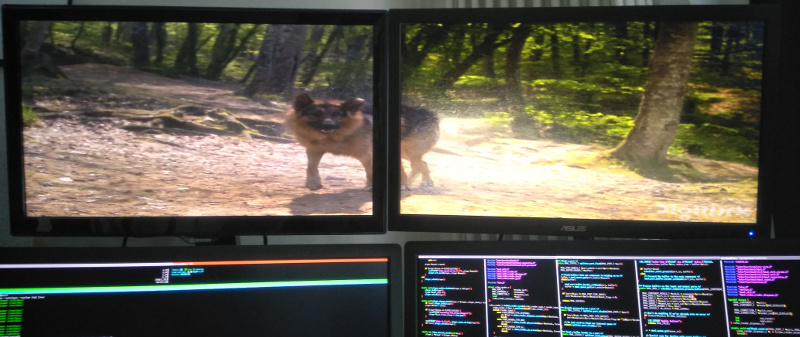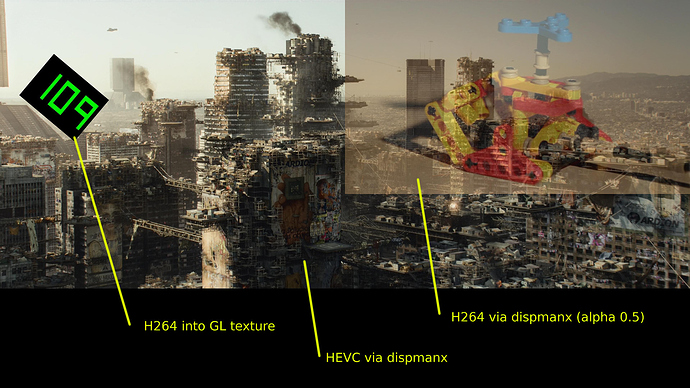Configuration editor UI has been updated for new Pi4 dual screen features
For a Pi4, the screen resolution settings now look a bit different than before. You can now not only select a video mode, but also select how and if you want to handle multiple screens. Right now there’s 6 different modes:

- Single screen (like before on earlier Pis)
- Cloned output. So two screens showing the same content
- 4 different arrangements of both screens next to each other.
Right now the UI only allows the same resolution on both screens. Additionally, you can’t freely place the screens, which might be interesting if they don’t have the same size. That might be added in the future though as the system already supports that.
Update: Of course that now means that dual screen video playback is now possible with a single Pi4. Have a look at this quickly created video showing this feature in action. Right now it’s still limited to H264 and thus 1920x1080 (or most likely something like 1920x540) for videos like the one below, but once H265 support is done, you’ll be able to use 3840x1080 for example.

2 Likes
4K / H265 video playback proof of concept
This is another important milestone on using the Pi4’s full potential: My in-dev version of info-beamer pi can now play 4K videos encoded in the H265/HEVC format for the first time. As it’s getting integrated into the normal info-beamer video runtime, splitting a video like this across two screens also works:
This can be used to play 3840x1080 (so 2xFullHD) across two FullHD displays. Previously you have been limited to 1920x1080 stretched across two displays thus cutting the horizontal resolution in half. With the H265 decoder, you can now use the full native resolution of both displays.
On 4K displays, playing 4K videos also works.
It’s still some work to get everything running smoothly and to properly understand all the limitations of the new decoding mechanism. Right now I’m not sure if it’s possible to decode two videos at once, for example. In addition, decoding H265 into a GL texture (for use with the magic video wall for example) also doesn’t work yet.
And for course for integration into the info-beamer hosted service, some changes have to be made regarding device compatibility. This would prevent you from installing a 4K setup on an older Pi that cannot decode them. So there’s still a ton of work to do, but it’s getting there. Stay tuned!
5 Likes
Quick status update. The core video player component has been rewritten to be more generic. It can now decode H264 into GL textures, H264 into fullscreen over/underlays as well as HEVC (so 4K videos!) into over/underlays. See this screenshot:
All of that works seamlessly across two displays as well!
It’s still a bit more work to make pausing, preloading, audio and looping possible with all modes, but I see light at the end of the tunnel. Hopefully there’s a new info-beamer pi release supporting all that in the near future. Stay tuned.
5 Likes
They wait is over: A first public release with all these features is now available: https://info-beamer.com/blog/dual-display-or-4k-and-hevc-on-the-pi-4
2 Likes
The current testing release now correctly shows information about both connected displays and gives a full preview of what’s currently on both screens in the Live View snapshot:
2 Likes
You can now upload your own HEVC video assets and use (for now) the HD Image/Video player package to play them on a Pi4. Soon more packages will support HEVC videos. Stay tuned!
More info about this update: HEVC/4K with the HD Player
Hi Florian,
Any idea when these Dual-Display / 4k changes might be available for Info-Beamer Pi? And , will it require a license change?
Thanks
The available info-beamer pi and info-beamer hosted’s version is the same software, just compiled slightly different due to OS differences. 4K and dual display support is already in there. Run info-beamer -fkms to learn more.




